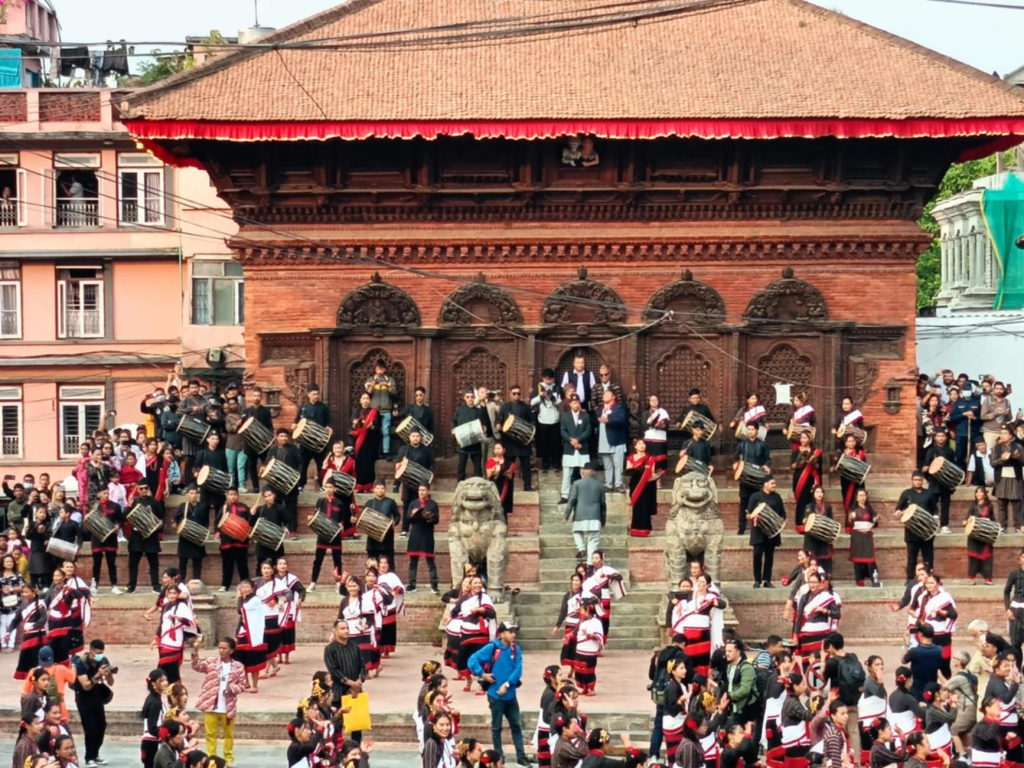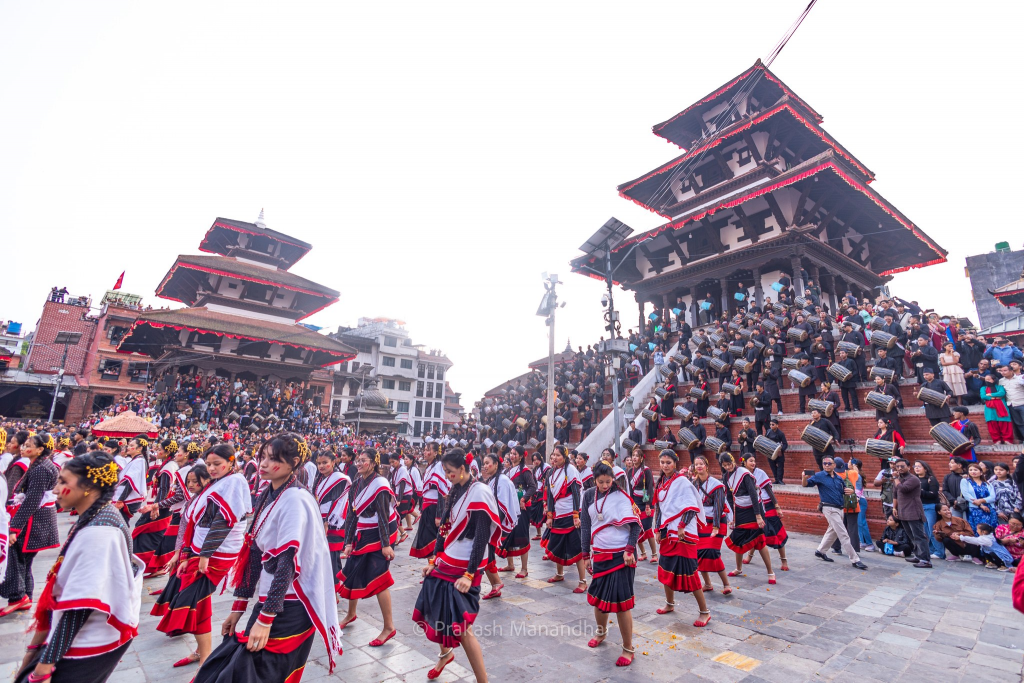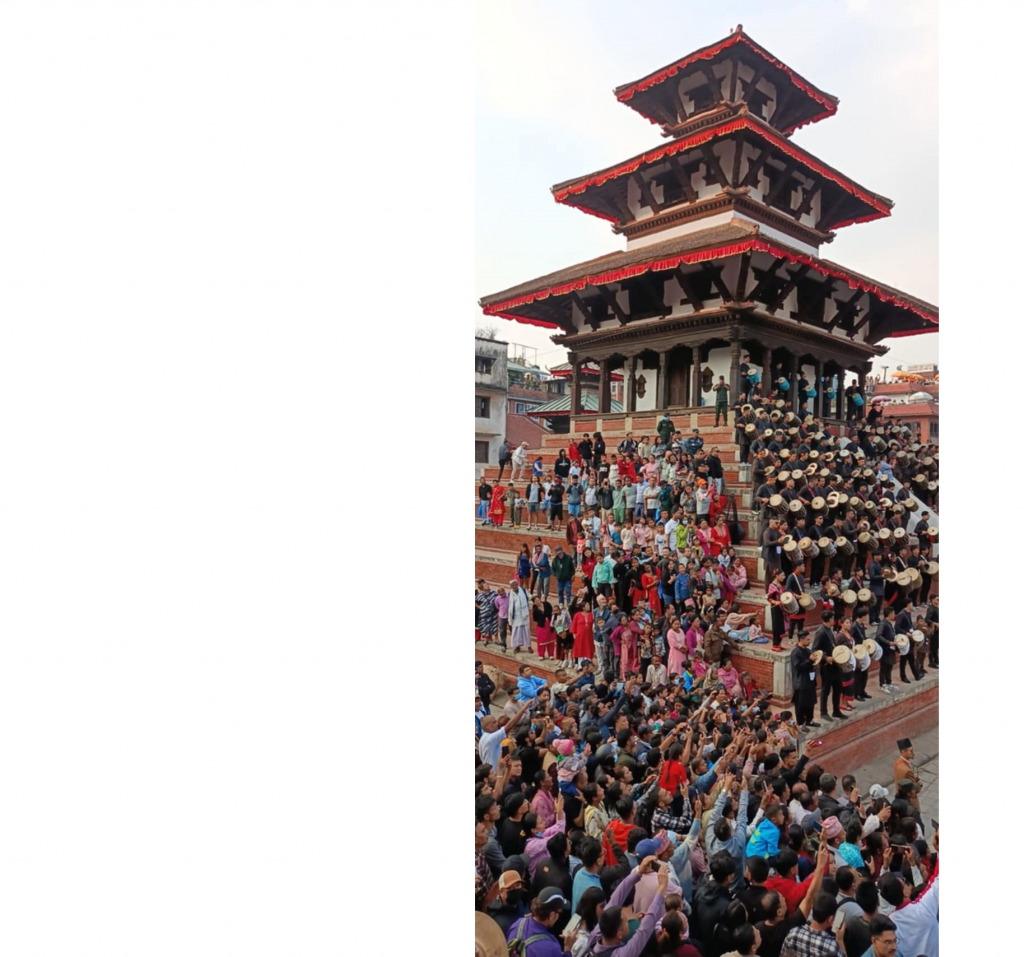Exotic Dhime dance performed by 1000 plus in Kathmandu
 The Nepal Weekly
The Nepal Weekly  October 22, 2024
October 22, 2024
On the occasion of World Tourism Day this year, a cultural presentation has been organized in the Hanumandhoka Durbar Square in Kathmandu on 19th October. The event was scheduled to perform on 28th September on the day the World Tourism Day was celebrated but due to heavy rain, floods and landslides in many places of the country including the Kathmandu Valley, the event was postponed.
The performance was carried out by the Kathmandu Durbar Square Tourism Promotion Association in collaboration with and various local organizations, the Kathmandu Metropolitan City had extended financial support the cultural event.

As part of the festivities, some 1,000 artists participated in a collective Dhime dance performance, alongside other diverse presentations. The event brought the vibrant culture of Nepal to life, as participants adorned in traditional attire mesmerised spectators with their energetic performance.
The orchestrated dance was conducted by Sudan Munikar.
Dhime is a traditional Nepalese drum of the Newar people. It belongs to the category of double-headed cylindrical membranophone.
The drum is rather big compared to other drums played by the Newars in Nepal. The size of this instrument varies from diameter of 40 inches to 51 inches and length of 17 inches to 21 inches. The shell of the drum is made of wood or metal. Sometimes wooden drums are partly covered with metal foil. The shape of old Dhimay drums is mostly irregular, formed by the natural shape of the piece of wood being used to make the drum body. Modern drums are either cylindrical or slightly barrel-shaped. Both heads are made of goat skin.
According to local legends, the instrument is believed to be invented by Mahadev. The drum has been played since the Kirata kingdom. The drum is played mostly by Jyapu community; the Jyapu community is the Newars whose occupation is farming. However, other castes also play it as Nepal is developing into a unified nation where all castes can play any cultural instruments.

In traditional context Dhime is played together with other instruments, mostly idiophones of different types, depending on the local tradition. In Dhime-ensembles, called Dhimebaja, the drum is accompanied by cymbals like Bhuchhya, and sometimes by Tai-nai, a gong-like instrument. Recently, with musicians looking for new ways to develop popular music with its roots in traditional music, the Dhime is played as a sort of bass drum, accompanying western instruments like guitar.

Dhime is played mainly by the Jyapus, the people among the Newars the Kathmandu Valley play in festivals and other auspicious occasions. Both male and female Jyapus also dance with the music of Dhime. So Dhime dance is typical dance belong to Jyapu community of Kathmandu valley which is performed during the festivals and after they reap the good harvest. As the simple steps and movement in traditional attires, playing Dhime and dance with it has been a popular cultural product for non-Jyapus and non-Newars as well. People enjoy with Dhime and dance with it for pleasure on different occasions.

